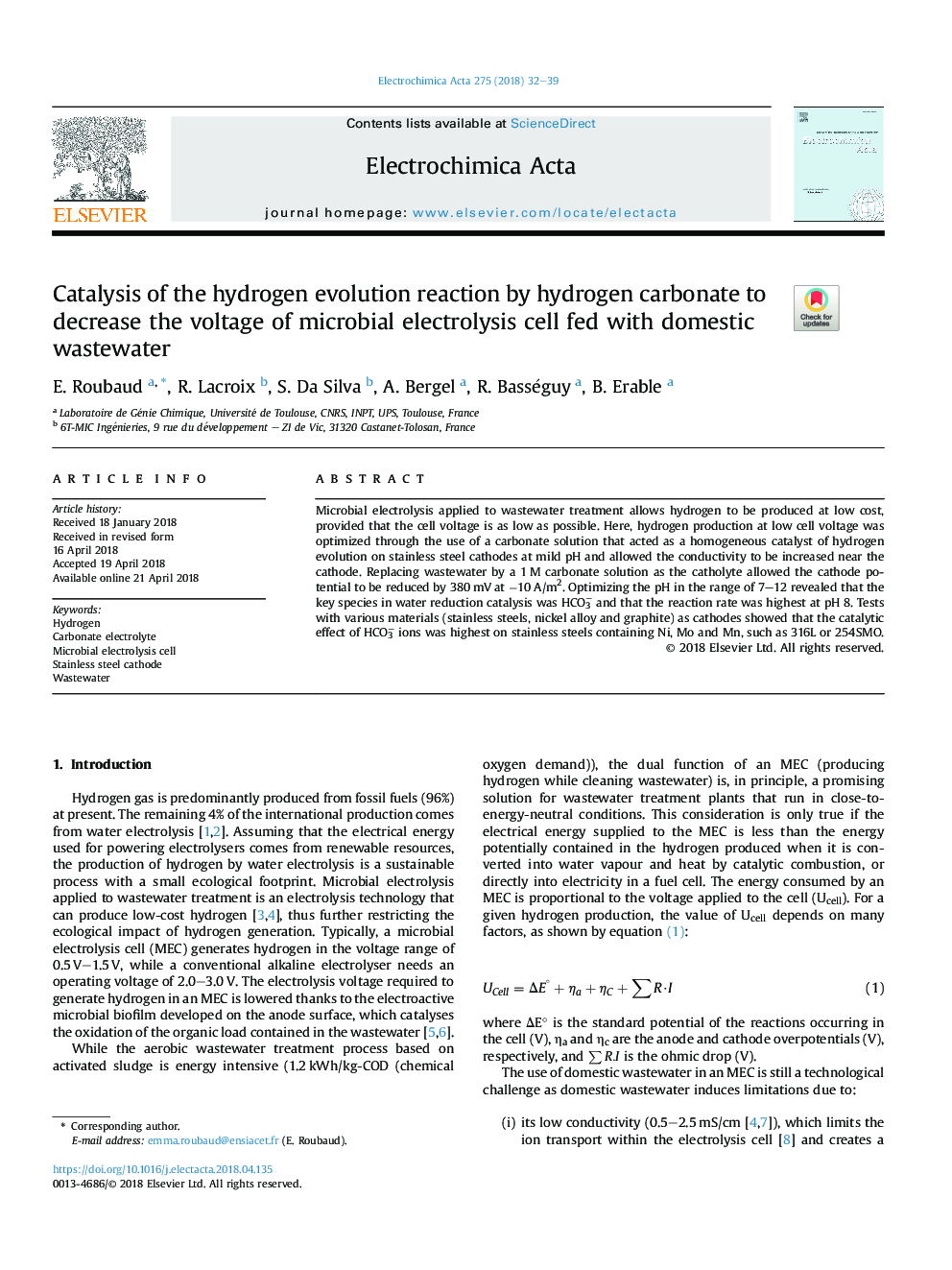| Article ID | Journal | Published Year | Pages | File Type |
|---|---|---|---|---|
| 6602898 | Electrochimica Acta | 2018 | 8 Pages |
Abstract
Microbial electrolysis applied to wastewater treatment allows hydrogen to be produced at low cost, provided that the cell voltage is as low as possible. Here, hydrogen production at low cell voltage was optimized through the use of a carbonate solution that acted as a homogeneous catalyst of hydrogen evolution on stainless steel cathodes at mild pH and allowed the conductivity to be increased near the cathode. Replacing wastewater by a 1â¯M carbonate solution as the catholyte allowed the cathode potential to be reduced by 380â¯mVâ¯at â10 A/m2. Optimizing the pH in the range of 7-12 revealed that the key species in water reduction catalysis was HCO3â and that the reaction rate was highest at pH 8. Tests with various materials (stainless steels, nickel alloy and graphite) as cathodes showed that the catalytic effect of HCO3â ions was highest on stainless steels containing Ni, Mo and Mn, such as 316L or 254SMO.
Related Topics
Physical Sciences and Engineering
Chemical Engineering
Chemical Engineering (General)
Authors
E. Roubaud, R. Lacroix, S. Da Silva, A. Bergel, R. Basséguy, B. Erable,
